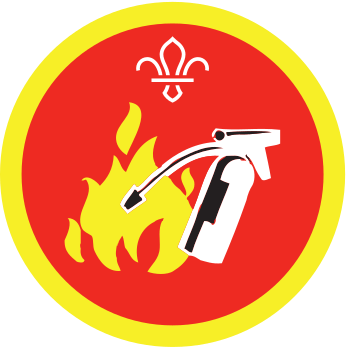It’s a drill!
Before the drill
- Fire drills are a rehearsal to check that escape routes are used as planned, buildings are evacuated in a speedy and orderly manner, and that people react rationally when confronted with a fire or any other emergency. They work best when they're unexpected, so you could cover the basics of evacuation in case of fire prior to the session.
- Before the drill, make sure you've discussed with your section:
- How to proceed in case of a fire: leave everything behind and exit the building in an orderly manner via the closest fire exit.
- Where the assembly point is, and the shortest and safest route to it avoiding obvious hazards.
- Doing a headcount and contacting the emergency services.
Instructions for the drill
- During a session sound the alarm in the same way that you would in a real fire. This may be an electronic system with a ‘test’ button or a manual system such as a hand bell or whistle. If you’re unsure how to use the real alarm in a test environment, use an alternative method of alerting the group.
- Ask your section to leave everything behind and start to exit the building in an orderly manner. Make sure that side rooms and areas are cleared by designated responsible adults (such as toilets and stores) as you leave.
- Walk towards the assembly point and do a head count.
- Explain after the headcount that this is when the emergency services should be called.
- While at the assembly point, ask the section:
- Without an alarm, how could you be made aware of a fire?
- Why shouldn’t you stop to finish what you were doing, collect belongings or make a drink before evacuating during a fire?
- Do you know how to check that detectors and alarms are working? (If working, the detector will let out a test beep.)
- How often should batteries be tested and replaced? (It's good practice to check and replace batteries in all your alarms when the clocks go back or forward to help remember when it's time to do it.)
- Do not return to the building until the emergency services have arrived and assessed it as safe to return. Or in a fire drill, until the headcount is finished and the person in charge of the drill has stated that it's safe to return.
Reflection
This activity helped you learn how to stay safe in the event of a fire. What's the safest way to exit a building that's on fire? Why do we do drills? What have you learnt from the drill? What's the most important thing we must do when evacuating? (Do not panic, do not run, do not go back into the building.)
Safety
All activities must be safely managed. You must complete a thorough risk assessment and take appropriate steps to reduce risk. Use the safety checklist to help you plan and risk assess your activity. Always get approval for the activity, and have suitable supervision and an InTouch process.
Explain to your section that when real fires occur, if we're not quick enough to evacuate the building, smoke will make it really hard to see and breathe. Smoke rises so the best way to escape is to crawl out of the building.
To make this activity more challenging, ask your section to take a quick look at the meeting place/or room, blindfold them (as if they can't see through the smoke) and give them three minutes to either walk or crawl out of the meeting place via the fire exit/door.
Some young people may find loud noises and drill situations fairly stressful, so make sure to explain the situation beforehand and reassure them throughout the process.
All Scout activities should be inclusive and accessible.
Young people could take the lead in the fire drills as fire marshals once they have learnt the procedures.
